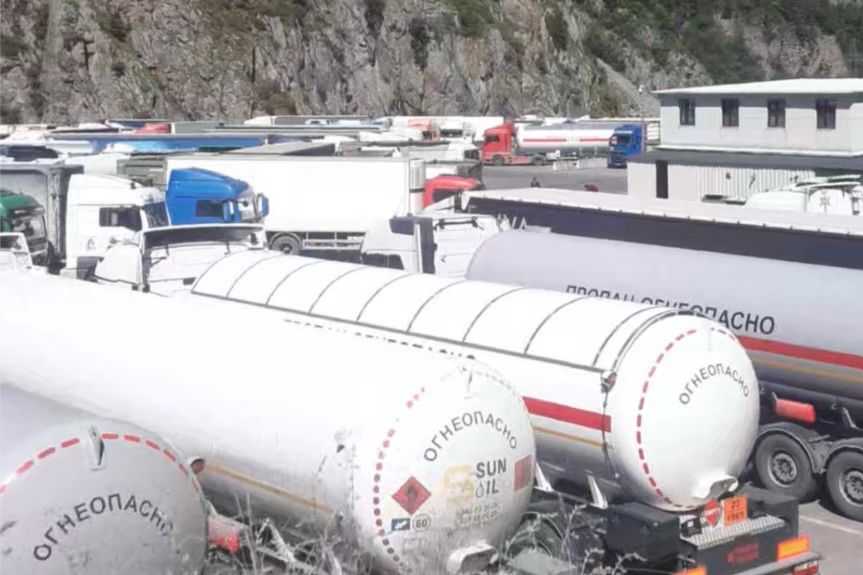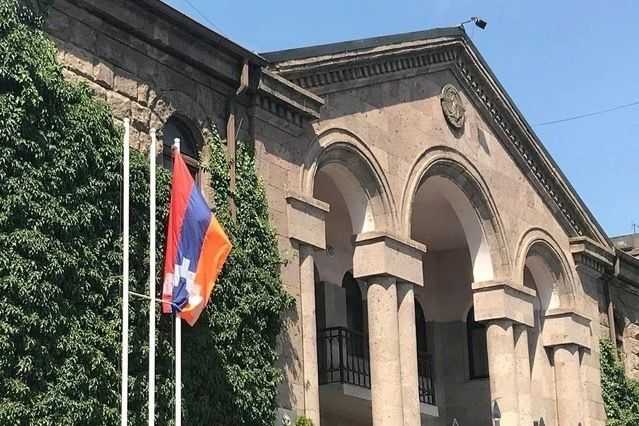
The construction of the 33-metre-high statue on Mount Hatis is sponsored by Gagik Tsarukyan, one of the wealthiest people in Armenia. The proposal has raised concerns among many regarding the risks the statue might pose to natural and cultural monuments on the mountain.
In an article published on 11 July, Hetq, a prominent Armenian investigative media outlet, revealed that Gagik Tsarukyan’s foundation had received ownership of over 140 hectares around the summit of the mountain in exchange for ֏13 million ($31,600).
The allocation was approved by the local governments of a few villages in the province of Kotayk, from which Tsarukyan hails.
Mount Hatis, with its summit at a height of 2,500 metres, is considered to be one of the most prominent natural monuments in Armenia.
Tsarukyan, a former MP of the Prosperous Armenia party, offered to sponsor the construction of the statue earlier in spring to help the people of Armenia ‘come out of despair’.
The statue was designed by Armen Samvelyan, the winner of Tsarukyan’s design contest for the statue.
It’s projected to be 33-metres high, excluding its pedestal, which is set to be two or three times higher than the statue itself. Tsarukyan said he wants the statute to be visible from any part of the country ‘as it is in Rio de Janeiro’.
In comparison, Christ the Redeemer, the statue of Jesus overlooking the Brazilian city, stands at 30-metres high on an 8-metre pedestal.
Early in July, Armenian Prime Minister Nikol Pashinyan praised the idea and said that the statue would attract more tourists to Armenia.
‘I hope that our relevant bodies will discuss the issue in due time’, Pashinyan said in a 7 July cabinet meeting. ‘There is a need for a number of administrative decisions, they will make those decisions, and the project will move forward’.
The Armenian Minister of Economy, Vahan Kerobyan, also expressed his support for the idea.
The Ministry of Education, Science, Culture, and Sport issued a statement tentatively approving the proposal, though, with some major caveats. It noted that the statue’s construction might harm or disrupt bronze age archaeological sites discovered atop the mountain. It also called on Tsarukyan to refrain from any illegal activity in the areas preserved by the state.
Further discussions on the topic by the government are expected to occur in the near future, despite the fact that construction has already begun. Tsarukyan has said that after the statue’s completion he expects the further construction of hotels and restaurants near the mountain.
Environmental activists in Armenia have also raised concerns about the ecosystem of the mountain and the lack of public discussions before the construction’s approval.
Yasha Solomonyan, the President of the Armenian Association of Professional Guides, told MediaLab that the statue of Jesus has nothing to do with ‘Armenian culture’, and the ‘touristic significance’ of it will ‘not be great’.
‘It is unacceptable for us to bring that monument, which is not authentic, [and] does not suit us’, Solomonyan said, adding that the mountain also features an important hiking trail.
It was with excitement that I witnessed the groundbreaking ceremony for the installation of the statue of Christ in Armenia 🇦🇲. This is a historical day!
Thank you, Minister of Economy of Armenia Vahan Kerobyan and businessman & philanthropist Gagik Tsarukyan, for inviting us! pic.twitter.com/g0CkM4XVfY
— Zurab Pololikashvili (@pololikashvili) July 9, 2022
The Armenian Apostolic Church also spoke against Tsarukyan’s offer back in March, when the former politician had announced his initial plans. At the time, the church said that it would only approve the design of reliefs depicting Jesus in the style of traditional Armenian Khachkars — carved memorial steles bearing Christian motifs.
The Supreme Spiritual Council urged the ‘authors and participants of the initiative to refrain from projects that contradict the tradition’ of the Armenian Apostolic Church and ‘to be guided by approaches consistent with our national-ecclesiastical culture, ecclesiological, and theological principles’.
Despite political disagreements, the Armenian government has decided to waive ֏4,2 billion ($10 million) worth of taxes on a casino owned by Tsarukyan, in tandem with discussions held about the statue.
Tsarukyan’s Prosperous Armenia Party was one of the most prominent opposition groups demanding Pashinyan’s resignation following the Second Nagorno-Karabakh War.
In a recent interview with the local media about the future statue, Tsarukyan said that ‘nothing has changed’ in his positions since.






